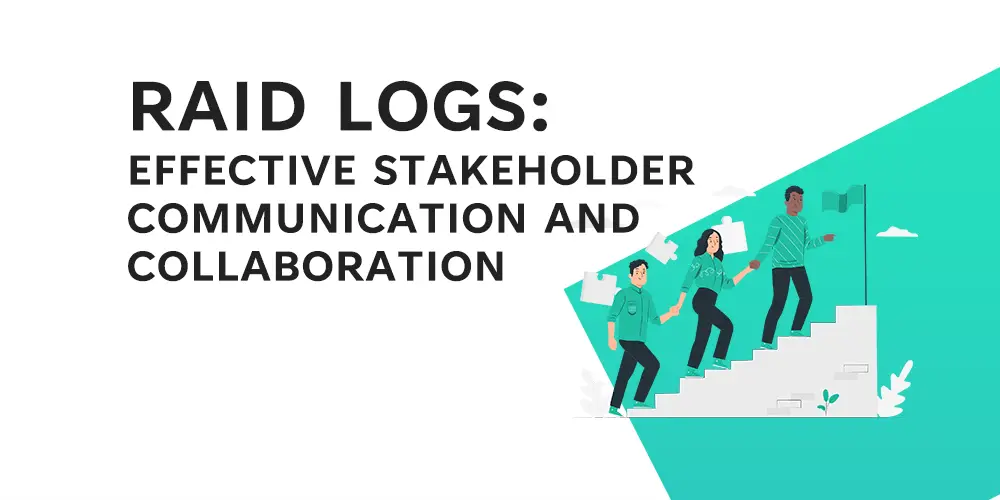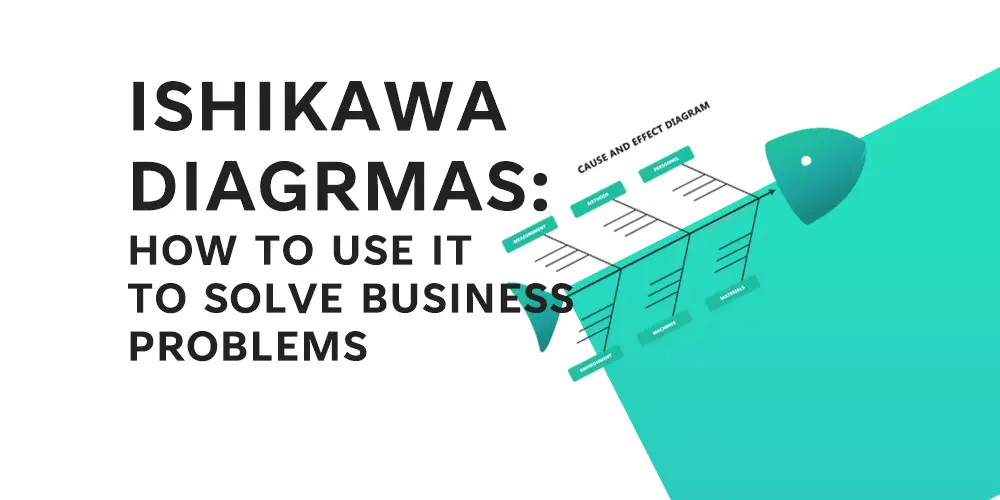Communication and collaboration among stakeholders are critical success factors in any project. RAID logs have become an indispensable tool for project managers as project complexity has increased, as has the need to manage risks, issues, actions, and decisions. In this blog post, we will discuss the role of RAID logs in stakeholder communication and collaboration, as well as best practices for utilizing this powerful tool. This post is a must-read for anyone looking to improve the outcome of their projects through better stakeholder engagement, whether you are a seasoned project manager or just starting out.
Looking to download a RAID log template? Click Here
Table of Contents
The Role of RAID logs in Stakeholder Communication

RAID logs play an important role in stakeholder communication by keeping everyone involved in a project informed, up-to-date, and aligned on its progress. RAID logs, which stand for Risks, Assumptions, Issues, and Decisions, are comprehensive tracking tools that assist project managers in centralised and organised monitoring and management of project risks, issues, actions, and decisions. RAID logs play an important role in promoting effective communication and collaboration by keeping stakeholders informed about these critical components of a project.
One of the primary functions of RAID logs is to keep stakeholders informed about risks, issues, actions, and decisions. Stakeholders must be informed about potential risks and issues that could impact the project’s timeline, budget, and quality, as well as the steps being taken to mitigate these risks and resolve issues. Regular status updates on these risks, issues, actions and decisions keep stakeholders informed and involved, allowing them to provide input, feedback, and support as needed.
Another significant advantage of RAID logs is that they improve transparency and accountability. RAID logs, due to their centralised and organised nature, provide a clear and concise record of project risks, issues, actions, and decisions. This allows stakeholders to better understand what is going on in the project and hold project managers accountable for their decisions and actions. RAID logs can help to build trust and confidence among stakeholders by providing an auditable trail of project information, which is critical for project success.
Another important function of RAID logs is to facilitate regular updates and meetings. Regular stakeholder meetings can be informed and guided by regular updates on the status of risks, issues, actions, and decisions. The logs can also be used to facilitate stakeholder discussion and collaboration, allowing them to share information, identify common goals, and develop plans for moving the project forward. This type of collaboration and teamwork can be critical for ensuring that everyone is on the same page with the project’s goals and objectives and working together to achieve success.
The Role of RAID logs in Stakeholder Collaboration

The role of RAID logs in stakeholder collaboration is critical for ensuring that everyone involved in a project is working towards the same goal. Collaboration and teamwork are critical for overcoming the inevitable challenges and roadblocks that arise in complex projects. RAID logs, as comprehensive tracking tools, can play an important role in encouraging stakeholder collaboration and teamwork.
One of the primary advantages of RAID logs in stakeholder collaboration is that they encourage collaboration and teamwork. RAID logs foster a shared understanding of the project’s goals and objectives by keeping everyone informed about risks, issues, actions, and decisions. As everyone is working towards a common goal, this shared understanding is critical for promoting collaboration and teamwork among stakeholders. The logs also serve as a centralised and organised platform for stakeholders to communicate, share information, and provide input and feedback, promoting collaboration and teamwork even further.
Another important role of RAID logs in stakeholder collaboration is breaking down silos and promoting cross-functional cooperation. Projects frequently involve multiple stakeholders from various departments and functions, each with their own set of perspectives, goals, and objectives. By encouraging cross-functional cooperation and collaboration, RAID logs can help to break down these silos. RAID logs encourage stakeholders to work together and coordinate their efforts by providing a shared understanding of the project goals and objectives. This promotes cross-functional cooperation and collaboration.
Another significant advantage of RAID logs in stakeholder collaboration is the ability to foster a shared understanding of project goals and objectives. RAID logs promote a shared understanding of the project’s goals and objectives among stakeholders by providing a centralised and organised record of project risks, issues, actions, and decisions. This shared understanding is critical for ensuring that everyone is on the same page with the project’s goals and objectives and working together to achieve success. The logs also provide a platform for stakeholders to discuss and collaborate on project goals and objectives, promoting a shared understanding and alignment among stakeholders.
Best Practices for using RAID logs in Stakeholder Communication and Collaboration
RAID logs are effective tools for improving stakeholder communication and collaboration in projects. However, in order for RAID logs to be effective, best practices for using them must be followed. This includes updating and maintaining the logs on a regular basis, making sure they are accessible and understandable, and integrating the logs into project management tools and processes. This blog post will go over these best practices in depth.
Regularly updating and maintaining RAID logs is critical for keeping stakeholders informed, up-to-date, and aligned on project progress. Project managers must ensure that the logs are regularly and accurately updated so that stakeholders have access to the most up-to-date information about risks, issues, actions, and decisions. This includes adding new risks or issues to the logs, tracking the status of actions taken, and documenting decisions made. Regular and accurate log updates are required to maintain stakeholder trust and confidence in the project.
Another important best practice for using RAID logs in stakeholder communication and collaboration is to make sure the logs are accessible and understandable. The logs must be easily accessible to all stakeholders, including project team members, senior management, and stakeholders outside the organisation. To be effective, the logs must also be presented in a format that is easily understood by all stakeholders. This includes using clear and concise language, visual aids where appropriate, and providing a clear and concise summary of the information contained in the logs.
Another important best practice for using RAID logs in stakeholder communication and collaboration is to integrate the logs into project management tools and processes. The logs should be integrated into the project management system so that all project information, such as risks, issues, actions, and decisions, is centralized and organized. This facilitates project managers’ monitoring and management of project risks, issues, actions, and decisions.
Example of a RAID log being used
Redesigning the company website, for example
A business has made the decision to redesign its website in order to improve user experience and attract more visitors. Designers, developers, content writers, and a project manager make up the project team. The project manager has decided to use a RAID log to track the project’s risks, issues, actions, and decisions.
Risks:
- Delays in receiving feedback on the website’s design from stakeholders
- Technical difficulties with integrating new website features
- Stakeholders have requested unexpected design changes.
Issues:
- Deadlines for delivering website content were missed.
- Inconsistencies in the website’s design
- Technical issues with the functionality of the website
Actions:
- Weekly meetings with stakeholders to solicit feedback on the website’s design
- Testing new features on a regular basis to identify and resolve technical issues
- Using additional resources, such as designers and developers, to ensure that design changes are implemented on time.
Decisions:
- To keep the project on track, the project manager has decided to prioritise website content delivery over website design.
- The project manager has also decided to hire more people to help with technical issues with the website’s functionality.
Advantages of using a RAID log:
Stakeholder Communication is Improved: The log provides a centralised platform for stakeholders to access the most up-to-date information about the project, such as risks, issues, actions, and decisions. This enhanced communication keeps stakeholders informed and engaged, fostering trust and confidence in the project.
Better Risk Management: The log provides a comprehensive and organised record of project risks, allowing the project manager to identify and mitigate potential risks more effectively. This improves risk management and contributes to the project’s success.
Enhanced Transparency and Accountability: The log provides a clear and concise record of project risks, issues, actions, and decisions, which enhances transparency and accountability. This promotes collaboration and teamwork by ensuring that everyone involved in the project is aware of what has been done and what needs to be done.
Improved Decision-Making: The log gives stakeholders a place to discuss and collaborate on project risks, issues, actions, and decisions, which improves decision-making. This helps to ensure that decisions are made in a timely and informed manner, which promotes the project’s success.
In conclusion, using a RAID log in the redesign of the company website has provided numerous benefits, including improved stakeholder communication, better risk management, enhanced transparency and accountability, and improved decision-making. Project managers who use RAID logs effectively will be well-positioned to ensure that projects are completed on time, within budget, and to the satisfaction of all stakeholders.
Conclusion
In conclusion, the use of RAID logs in project management plays a crucial role in effective stakeholder communication and collaboration. The log improves transparency and accountability by keeping stakeholders informed about risks, issues, actions, and decisions. It also facilitates regular updates and meetings. The RAID log also promotes collaboration and teamwork by breaking down silos and encouraging cross-functional cooperation, as well as fostering a shared understanding of project goals and objectives.
To achieve the best results best practises for using RAID logs must be followed, such as regularly updating and maintaining the logs, ensuring that the logs are accessible and understandable, and integrating the logs into project management tools and processes. Project managers can ensure that projects are completed on time, within budget, and to the satisfaction of all stakeholders by effectively utilising a RAID log.








